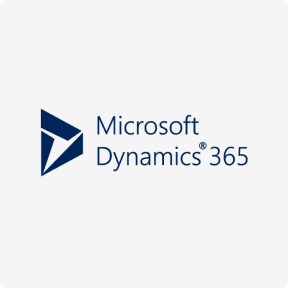It requires an in-depth understanding of workload performance characteristics and needs and the ability to match those needs to the actual offerings of multiple cloud vendors. It lets you access your specific instance of the application and your data from any computer, and typically from any mobile device. If your computer or mobile device breaks, you don’t lose your data (because it’s all in the cloud).
- A multi-cloud approach involves using two or more clouds supplied by two or more cloud service providers.
- Cloud customers can choose between a variety of different cloud types and service models, all with their own advantages and disadvantages.
- All of the major public cloud providers offer Disaster-Recovery-as-a-Service (DRaaS).
- Within each of these cloud delivery models there are three types of cloud computing and as a service -aaS offerings to choose from.
- But a private cloud can also be hosted on an independent cloud provider’s infrastructure or built on rented infrastructure housed in an offsite data center.
- In a hybrid cloud setup, organizations can leverage the benefits of both public and private clouds to create a flexible and scalable computing environment.
- However, PaaS focuses on providing application development tools rather than compute resources.
Using multiple cloud platforms helps manage and accommodate different types of data loads, and increases optimization of IT operations. For many enterprises, the question is not whether they need a solution involving more than one cloud – but rather, which one would work best for their needs. Cloud vendors provide computing resources cloud solutions to create and test apps, including cloud and hardware infrastructure parts, such as middleware and operating systems. In addition to constructing and keeping the required equipment, the PaaS environment allows cloud users to install and house information sets, development instruments, and company assessment software.
Cloud computing service providers
Each cloud computing service and deployment model type provides you with different levels of control, flexibility and management. Public cloud refers to computing services offered by third-party providers over the internet. Unlike private cloud, the services on public cloud are available to anyone who wants to use or purchase them.
Today, there are several examples of cloud computing applications used by both businesses and individuals. One type of cloud service would be streaming platforms for audio or video, where the actual media files are stored remotely. Another would be data storage platforms like Google Drive, Dropbox, OneDrive, or Box. Serverless architecture enables a type of enterprise IT design where code is modular and isolated.
Cloud computing storage
Platform as a Service cloud computing provides some of the nuts and bolts for business computing with hardware and software tools delivery. The main purpose or value of having these available online is to take pressure off of a company’s existing servers and in-house network. The method behind the madness is that building and testing software or new applications can cause downtime to the rest of a traditional in-house server. Cloud bursting is an application implementation design in which an application runs in an exclusive cloud or information facility and “bursts” to a public cloud when the demand for computing ability boosts. A key benefit of cloud bursting and a hybrid cloud model is that an organization just pays for added compute resources when they are required.
As such, virtualization is often used for applications where performance is not critical. But since virtualization offers myriad benefits in relation to costs, flexibility and security, its assets often far outweigh the drawbacks. While https://www.globalcloudteam.com/ virtualization is useful in a simple on-premises environment like this one, virtualization technology has become inextricably linked to the cloud, where virtual machines can be deployed on a massive scale and managed centrally.
All Your Cloud Spend, In One View
Cloud service providers offer a vast array of VM options that will run any workload you can imagine. Every aspect of your VM can be configured to meet the unique compute requirements of your business – operating system, number of cores, location, attached storage. This includes scaling the number of VM instances you require on any given day to meet your ever-changing compute requirements.

At the same time, access to public cloud storage and compute resources is guarded by account login credentials. Virtualization enables the easy abstraction and provisioning of services and underlying cloud systems into logical entities that users can request and utilize. Automation and accompanying orchestration capabilities provide users with a high degree of self-service to provision resources, connect services and deploy workloads without direct intervention from the cloud provider’s IT staff. Private clouds are loosely defined as cloud environments solely dedicated to a single end user or group, where the environment usually runs behind that user or group’s firewall. All clouds become private clouds when the underlying IT infrastructure is dedicated to a single customer with completely isolated access.
What is IaaS in cloud computing?
Serverless computing in cloud service models is also called Function as a Service (FaaS). This is a relatively new cloud service model that provides solutions to build applications as simple, event-triggered functions without managing or scaling any infrastructure. A single computer running virtualization hardware can emulate multiple virtual machines simultaneously, each completely independent from the other. For example, a Windows server can run a dozen VMs at once — some Windows and some various distributions of open source platforms like Linux. One of the key advantages of this strategy is that it allows the enterprise to host multiple types of disparate workloads on a single server instead of twelve different devices. Infrastructure as a service, or IaaS, is a good example of this, which is a type of cloud service where the cloud provider manages the basic infrastructure for you.

And video game makers are using the cloud to deliver online games to millions of players around the world. No two clouds are the same (even if they’re the same type), and no two cloud services are used to solve the same problem. But by understanding the similarities, you can be more informed about how the caveats of each cloud computing type and cloud service might impact your business. PaaS delivers and manages hardware and software resources for developing, testing, delivering, and managing cloud applications.
How SeatGeek Measures Cost Per Customer
It is also known as an internal cloud, enterprise cloud, or corporate cloud, a private cloud is typically managed by internal resources and its use is not restricted to anyone outside of the organization. There are many benefits to using a private cloud, such as self-service, scalability, and elasticity, but there are also additional controls, security, and customizations that you can take advantage of. Hybrid cloud is just what it sounds like—a combination of public and private cloud environments. Specifically, and ideally, a hybrid cloud connects an organization’s private cloud services and public clouds into a single, flexible infrastructure for running the organization’s applications and workloads.

Here’s exactly what each cloud computing model provides and how to choose the best option for your needs. A community cloud, which is shared by several organizations, supports a particular community that shares the same concerns — e.g., the same mission, policy, security requirements and compliance considerations. A community cloud is either managed by these organizations or a third-party vendor and can be on or off premises.
